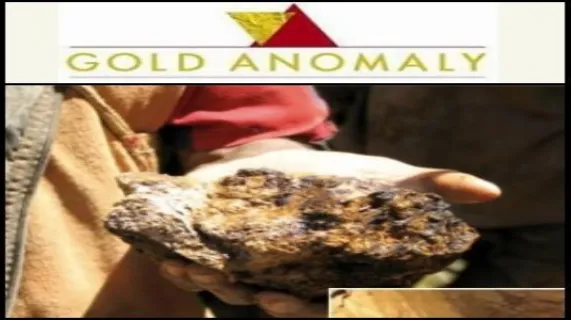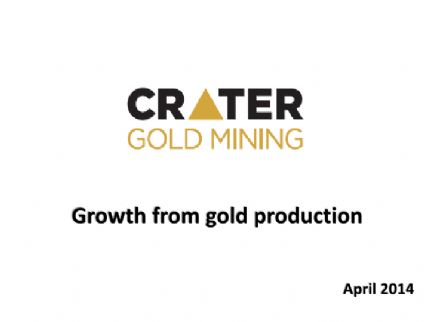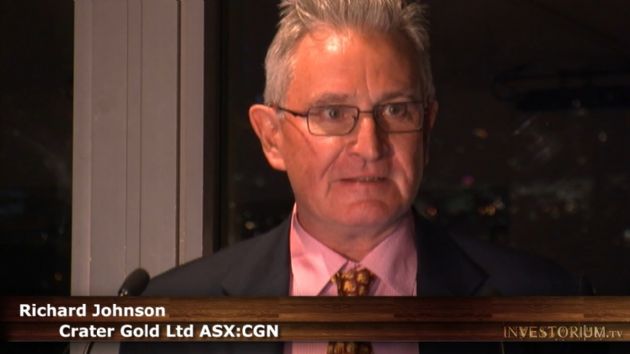
All Anomalous Gold and Copper Areas at Crater
Sydney, June 6, 2012 AEST (ABN Newswire) - Gold Anomaly Limited ( ASX:GOA) is pleased to announce that it has taken advantage of recent land availability and applied(1) for a new exploration license ELA 2203 over 501 square kilometres adjoining its current block of three contiguous exploration licenses in the Crater Mountain area (ELs 1115, 1353 and 1384) which total 180 square kilometres. When granted this will bring GOA's tenement holdings in the area to 681 square kilometres. The new license will adjoin EL 1115 and EL 1353 on the southwest, south and east, lying mostly on the southern flank of the main Crater Mountain east - west drainage divide (refer Figure 1).
ASX:GOA) is pleased to announce that it has taken advantage of recent land availability and applied(1) for a new exploration license ELA 2203 over 501 square kilometres adjoining its current block of three contiguous exploration licenses in the Crater Mountain area (ELs 1115, 1353 and 1384) which total 180 square kilometres. When granted this will bring GOA's tenement holdings in the area to 681 square kilometres. The new license will adjoin EL 1115 and EL 1353 on the southwest, south and east, lying mostly on the southern flank of the main Crater Mountain east - west drainage divide (refer Figure 1).
The new southern license application is underlain by rocks of the Crater Mountain volcanic complex that exhibit the same geological characteristics as Nevera, with similar potential for gold and copper deposits. Historic regional exploration returned anomalous gold, silver and base metal anomalies over a wide area, as well as visible gold in pan concentrates at a number of locations. As a result GOA believes that it has secured the exploration rights to an under-explored new province with potential for a number of new gold and copper deposits In commenting on the Company's application for a new Exploration License at Crater Mountain, Gold Anomaly's Exploration Director Mr Peter Macnab said: "I am very pleased to be able to say that in applying for ELA 2203 Gold Anomaly is looking to extend its tenements to take in all of the historic anomalous areas in the Crater Mountain range.
These anomalies are a product of magmatic and hydrothermal activity related to the Pliocene to recent Crater Mountain volcanic activity. Airborne geophysical surveys coupled with detailed exploration on the ground can be expected to generate many interesting new targets."
Following GOA's successful drilling program at the Nevera Prospect which resulted in an initial inferred resource of 790k ozs after only 12 months and 6,000 m of drilling, the securing of the Crater South area comes at an opportune time as GOA moves into the second phase of its exploration strategy at Crater Mountain, to take advantage of its understanding of the Crater Mountain mineralisation and mount a concerted regional programme focused on locating and defining new prospects. This is aimed at assessing the concept that Nevera is one of a number of gold - copper deposits in a large system in the Crater Mountain range. Geophysical investigations including an airborne magnetic and radiometric survey will be undertaken in conjunction with detailed exploration on the ground to locate and define new prospects in the existing EL's and the new ELA before recommencing a drilling programme.
Geology of Crater South application
ELA 2203 is underlain largely by andesitic volcanic rocks of the ancestral Pliocene Crater Mountain stratovolcano which grew to an immense size before undergoing caldron collapse on a ring fracture system 20 kilometres in diameter, followed by a long period of deep erosion which continued until recent renewed andesitic - dacitic volcanic activity formed a string of smaller parasite cones within and east of the northeast quadrant of the collapse structure. The volcanic rocks are sitting on a basement of Mesozoic marine shales, with reactivation of northeasterly, northerly and north-westerly sets of deep crustal fractures controlling the geometry of the sub-volcanic magmatic activity, hydrothermal activity and mineralisation.
Historic exploration at Crater South
When systematic mineral exploration commenced in Papua New Guinea in the 1960s and 1970s with the advent of the helicopter as a primary prospecting tool much of the country was completely unknown. Explorers inspired by the recently discovered and developed huge Panguna porphyry copper - gold deposit on Bougainville conducted wide-ranging first-pass surveys over the entire country, targeting further large copper gold mineralised systems similarly uplifted and eroded to produce long trains of mineralised boulders in streams and accompanied by extensive geochemical signatures.
Large deeply eroding Cu - Au deposits were discovered at Frieda River and Ok Tedi, and the previously known Porgera Au and Yandera Cu - Mo deposits were also easily highlighted. Many other mineralised systems with lesser and more subtle surface expression were also found, including those at Crater Mountain, and ongoing exploration of these over the past three decades has led to the definition of numerous good prospects of which a number have progressed to proven deposit or mine status, notably Harmony - Newcrest's Wafi - Golpu Au and Cu - Au deposits in the northern sector of the Morobe Goldfields.
A common factor throughout has been that in regions with widespread anomalies, follow up exploration narrowed rapidly onto those areas with best surface expression and more immediate merit, in the ever-present need to produce continuously exciting results to justify on-going exploration dollars, whilst the remainder of the anomalies received diminishing attention. This has been the case at Crater Mountain where helicopter-borne prospecting in the 1970s identified a large number of drainages on the Crater Mountain range as being anomalous in Au, Cu and to a lesser extent Pb, Zn and/or Ag within a region straddling the range for 25 km east-west by 15 km north-south: follow-up prospecting in the 1980s identified the Nevera, Masi, Nimi and Awanita Prospects, with subsequent work focusing increasingly on Nevera, whilst most of the other widespread areas of anomalism identified in the early prospecting forays have not been followed up at all.
Regional exploration within the granted licenses including Nimi, Masi and Awanita Since early 2010 GOA has been focused on the Nevera Prospect where it has been opening up the northern end of the Prospect with bulldozer contour benching since June 2010 and carrying out drilling since December 2010, however in recent months it has also been conducting detailed follow up exploration in its Nimi Prospect which bears many resemblances to the Nevera Prospect, and has now initiated detailed follow up in its Masi and Awanita Prospects. In addition the Company has been prospecting in several areas outside the known prospects to extend the limits of the known mineralisation and has also commenced to follow up on a number of unexplained anomalies within the granted licenses.
In recent decades the recognition and understanding of large volcano-related mineralised hydrothermal systems has progressed dramatically, and this along with the advent of high quality airborne magnetic and radiometric surveys (using helicopters flying at little more than tree-top level and 50 metre line spacing) to supplement detailed surface exploration, and more recently deep drilling from 1,000 to 2,000 metres depth, is increasingly leading to the discovery of significant buried mineral deposits with little surface expression.
GOA is currently in discussion with several airborne geophysical companies operating in Papua New Guinea with a view to commissioning a magnetics and radiometrics survey over its Crater Mountain licenses.
Proposed exploration on ELA 2203
When ELA 2203 is granted systematic detailed prospecting will be commenced on the new ground to narrow down and focus on the source of the many unexplained historic anomalies. Remote sensing imagery will be analyzed to determine regional and local structural patterns, as these will have played a major role in determining the style and location of mineralisation.
In the past two decades advances in the understanding of Papua New Guinea's volcano- related hydrothermal mineralisation systems has highlighted the need to go back and carry out detailed systematic prospecting over known anomalous areas, employing traditional sampling comprising stream sediment and pan concentrate collection, rock float and outcrop collection and ridge-andspur, base-of-slope and grid soil sampling, and this will be undertaken in the Crater South license, along with modern airborne geophysics consisting of helicopter-borne magnetics and radiometrics flown at low level on a close line spacing.
GOA has high hopes for discovering further major prospects in this highly underexplored ground.
(1) The Application status will transition to a fully granted EL on 1) a successful warden hearing where landowners give their views on GOA having the rights to explore 2) Ministerial approval
To view the complete Gold Anomaly announcement including Figures, please click the following link below:
http://media.abnnewswire.net/media/en/docs/ASX-GOA-242473.pdf
Contact
Gold Anomaly Limited
T: +61-2-9241-4224
F: +61-2-9252-2335
WWW: www.goldanomaly.com.au
| ||
|






